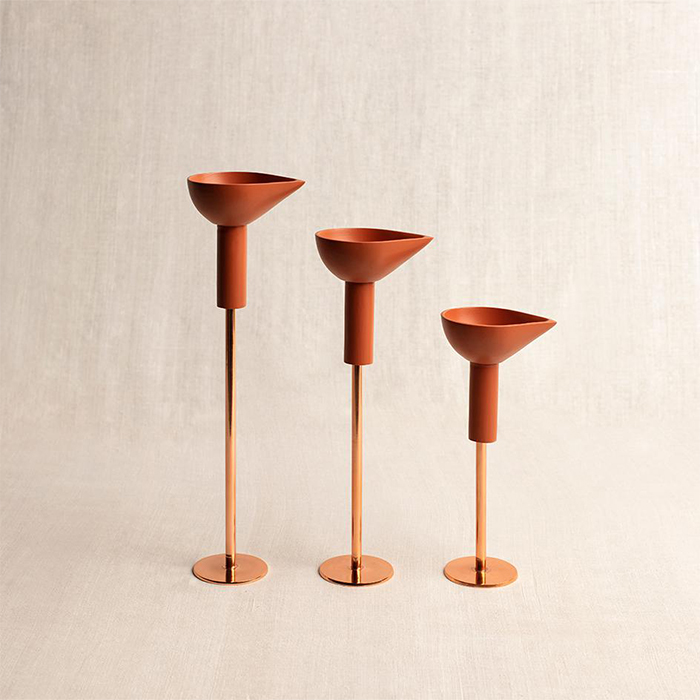Maison & Objet Fall 2011, Part One
Six housewares brands delightfully confusing indoors and out

At the biannual housewares tradeshow Maison & Objet we found many of the winds of innovation blowing from the outdoor arena this year. The contemporary, nomad-like movement reverses the use of indoor and outdoor spaces. When indoor moves outdoor, along with bathroom and kitchen, the whole living room and dining room seem to follow as well—sometimes even surrounded by walls and a ceiling. Designing for dual living, this shift brings with it the quest for new materials to face outside elements, while keeping the elegance typically reserved for interiors.
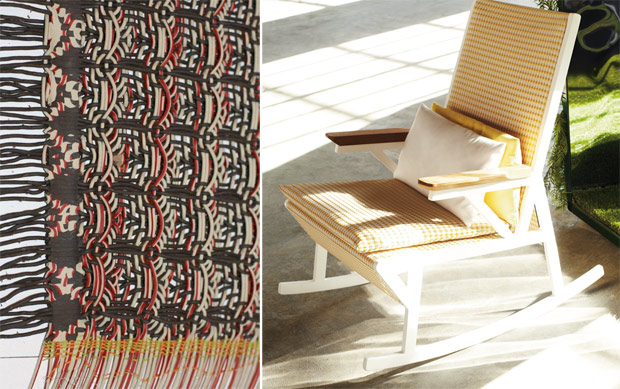
Since outdoor furniture requires sophisticated technical materials, working with them often becomes a source of inspiration for designers, like Patricia Urquiola. A Spanish native now working in Milan, she recently created a collection for leading Spanish design firm Kettal. In our interview with Urquiola, a trained architect, she explained that the collaboration with Kettal was all about researching a new material called “Nido d’Ape” (honeycomb) consisting of a PVC fabric knotted in a three-dimensions reminiscent of the “macramé” technique. The team pulled materials from other fields, creating a new manufacturing process to achieve the desired effect.

Urquiola’s idea came from observing a common organic fabric, a coffee filter, under a microscope. The result, surprisingly thick, smooth and rug-like, provides a pleasant cozy feeling with the visual treat of seeing all the filaments formed into mini pyramidal grids. Stretched taut between aluminum frames, the chairs combine the elegance of indoor fabric-based furniture in a range of colors for outdoor—with all the resilience needed for sitting and resistance to any kind of weather. The “Vieques” collection comes out in January 2012.
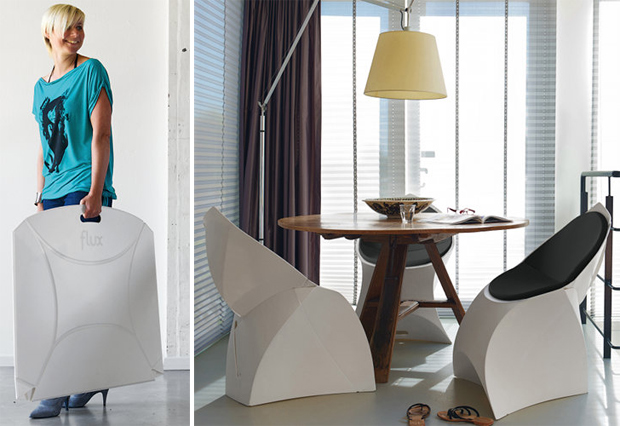
Also riding the nomadic wave and the constant problem of limited urban space, the newly-formed Dutch company Flux came up with a cutting-edge folding chair. The end-of-studies project of two Dutch designers was launched in March 2011 and already 40,000 units have been sold all over the world.

The durable chair consists of a flat rectangular sheet of polypropylene weighing less than five kilograms that can support up to 160 kg. You can refold over and over (testers gave up after 800 tries) and hang six chairs all at once on the wall thanks to a special belt and wall mount system. UV-resistant and waterproof, it combines stiffness and flexibility in a contemporary design, offered in a wide range of colors.
There is even a kids model also available. Prices run from $200 for the regular model to $110 for the kid’s version, selling purchased online.

While indoor furnishings continue to move outside, urban citizens aim to bring some outdoor favorites inside by gardening in any corner of space. Be it on the balcony, in a courtyard or even inside the apartment, the young French company Bacsac meets this need with their simple accessories. The work of a designer and two landscape architects, their ultra-light bags are easily transportable and can be used both indoor and out. Made from double-walled geotextile fabric (100% recyclable), the containers maintain the necessary balance between air, earth and water and are frost resistant. U.S. shoppers can find them at Sprouthouse.com.
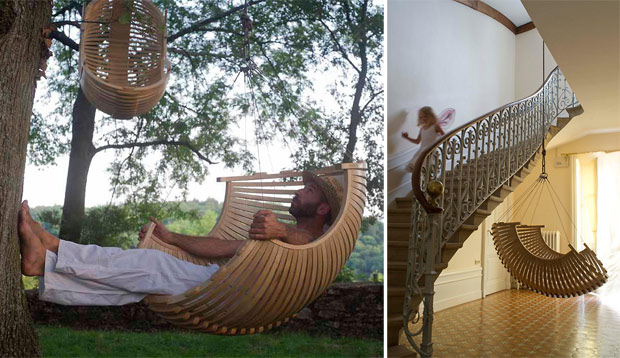
Living al fresco also inspired hybrid leisure objects, like the gracious suspended wooden cradle, half garden hammock and half swing chair, designed by two the Frenchmen of Concept Suspendu. The company, created eight months ago and located in the Alps, specializes in woodwork (one of the pair is a former carpenter) and makes their signed, limited-run furniture from ash—wood known for its solidity and usually used for tool handles.
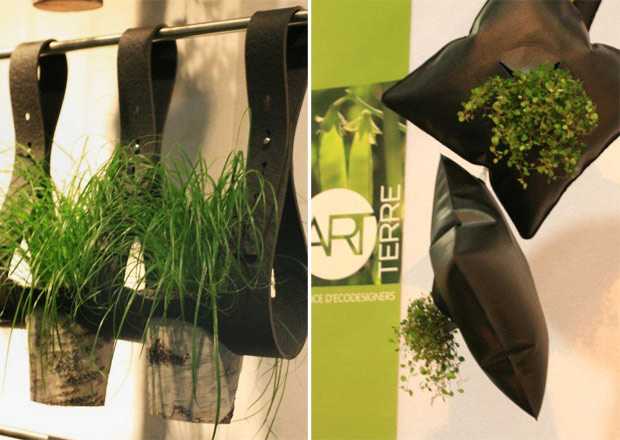
The Green attitude, an enduring key point of contemporary interior design, was present throughout the show in a number of the projects based on recycling and reuse. Parisian eco-design agency Art Terre pursues a double purpose. Along with recycling materials and reusing objects, their concern is to reconsider the production process and to facilitate social integration of disabled people or former prisoners.
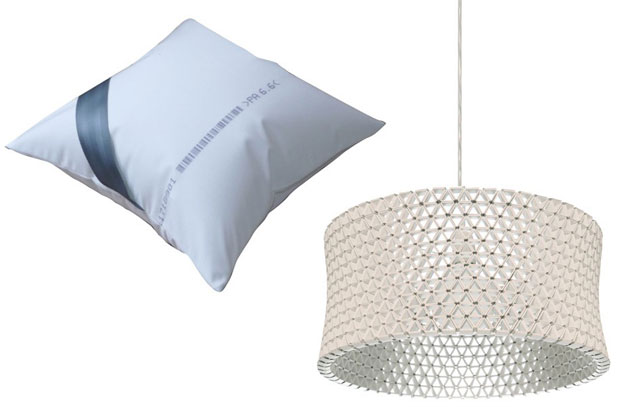
The resulting collection consists of well-designed and well-manufactured original and beautiful items, like ginko-shaped placemats and inflatable flowerpots (as well as a full collection of other flower pots). They all share an innovative process using recycled PVC fabrics made from car industry remnants; the inventive cushions are made of air-bags and customized with a seatbelt to remind the user of the origin of the product. Coatracks and dustbins are made of salvaged bed slats. But the most beautiful achievement is the handmade series of paper lamps, resulting from a paper folding technique similar to Japanese origami.
